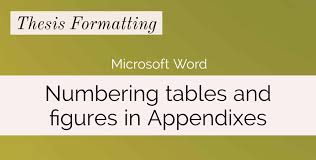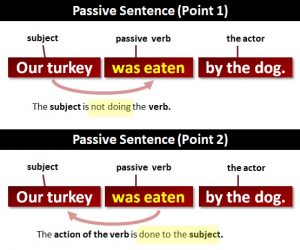DISSERTATION SECTIONS
THEORETICAL FRAMEWORK OF A DISSERTATION
The theoretical framework describes the trajectory of a study and decisively places it in a strong theoretical foundation. The overriding objective of the framework is to render study results more significant and credible to the hypothetical foundations as well as applicable in diverse contexts. In this way, it is a structure adopted by a scholar to develop his (or her) own research inquiry, thereby providing a basis on which the research is built.
Table of Contents
- Theoritical Framework
- Example of a theoretical framework
- The Social Interaction Theory
- Stakeholder Participation theory
- Contingency theory of conflict management
- Preface
Table of Contents
- Basic features of a preface
- Recommendations to a client
- Purpose and structure of an advisory report
- Abstract
- Sample Abstract
- Tips for Writing an overview of your dissertation
Example of Theoretical Framework
As already stated, a theoretical framework is determined by the research interest or area of study. Even within disciplines, certain theories are more appropriate than others. In this paper, based on a research on the impact on the nexus between conflict resolution strategies and academic performance, we present a theoretical framework.
A theoretical review is defined as the adoption of concepts or models from a single theory to explain or elucidate an event or a specific research problem. This research is anchored on the Social Interaction theory.

The Social Interaction Theory
Proposed in the 1980s, the theory claims that conflict is embedded in the process of interaction. In this way, contrasting viewpoints, contradictory beliefs, and conflicting standards, are regarded as main instigators or aggravators of conflict. In school settings, teacher influence and authority in their interaction with learners tend to escalate conflict. It perceives teacher/student interactions as anchored exclusively on prescribed and official power structures tend to exacerbate conflict. The lack of a democratic system and dearth of confidence in the decency and credibility of society could also yield conflict.
The origin of conflict is also traced to inability of teachers and students to identify school related issues and to find solutions in a timely and collaborative manner. This view is corroborated by studies that attribute conflict to intrinsic conflict of interest among interlocutors. The interests, sometimes referred to as “classroom interests-at-hand” that predispose teachers and learners to concern themselves with the self, self-identity, their perception of their abilities, beliefs and attitudes. This objective is pursued amid an intimidating environment both teachers educators and learners alike. Teacher related antecedents of conflict such as enhanced intake of new students, insufficient amenities and funding, and the demands of the job conspire with student-related factors to increase the likelihood of conflict. On their part, students generally face problems related to their weaker position in the school power hierarchy, putting them at the mercy of teachers and staff. Inferentially, both parties end up contending with potential injury to self-esteem and daily demands to muddle through the situation.
It is often argued that stabilization of teacher-learner relationships are a result of two possibilities: a teacher could choose to enforce authority by exercising power or he (or she) can decide to engage constructively with students in an environment that fosters construction of social understanding by both parties. Heavy-handedness is generally preferred by teachers who perceive a collaborative approach as a threat to their authority. It is also preferred by teachers with poor arbitration skills.
Martial approaches have a tendency to generate fear, apprehension, and alarm among learners. On the other hand, students will likely resist school authority, perceiving it as perpetuation of unfairness. This leads to conflict. Studies have shown that incorporation of students in leadership and entrenching fairness could enhance harmony within schools. These findings came at a time when earlier studies showed that more than half of teachers preferred totalitarian or strong-arm tactics. These acts erode confidence in students and encourage disorderly conduct among learners.
Top-heavy power structures that grant unfettered power to teachers tend to generate extra resistance from students. This situation often creates a situation in which learners are compelled to overprize their autonomy, to fight for their rights, to counter perceived excesses of school authorities, or to yield to the whims of the teachers. Each of these reactions perpetuate conflict. It is also worth noting that the extent of teacher’s success in instituting specific types of connections with their charges is critical for attainment of harmony and reciprocal benefits of the learning process. His perspective regards the teacher as an enabler of learning, and a nonintrusive operative, whose job is to promote development of students’ abilities to decipher and proffer solutions to their challenges. In essence, this postulation regards conflict as an inevitable result of teachers’ rigidity and tendency to force their will on students in violation of the latter’s right to independent thinking. All things considered, entrenched practices, school lectures, uninviting instructional topics, rote learning (rather than experiential or contextual learning), tend to legitimize a power hierarchy that students find offensive. Thus, it is necessary for school leadership to embrace conflict resolution approaches with the least impact on learner’s self-worth and dignity.
Stakeholder Participation theory
Originally proposed in the early 1970s, stakeholder participation theory focuses on beliefs, approaches, moral and ethical standards deemed effective for running groups and societies through input of members. It scrutinizes the circumstances under which administrators subject their juniors, who are regarded as stakeholders. The theory recommends that leaders should prioritize stakeholder concerns ahead of their own, and prior to decision making. Existing research data demonstrates that the stakeholder participation theory offers diverse perspectives that dovetail with practical data to detect links between institutional leadership and the realization of organizational objectives.
In the school environment, students are key stakeholders even though they play peripheral roles as far as decision making is concerned. Teachers, staff, and school administration are stakeholders as well. However, it is important to delineate the scope of engagement of these parties. Students are classified as normatively legitimate stakeholders (since the school holds a moral obligation towards them) while teachers and the rest if the staff are derivatively legitimate stakeholders (their position as stakeholders is hinged on their duties as far as their duties impact the school its normatively legitimate stakeholders (students). As school tradition dictates, there are traditions and standard procedures that facilitate the progression of school activities from needs identification to execution of decision reached by school administrations. Multiple echelons of learner involvement may be essential to reduce conflict at the implementation stage. Little input from students or total disregard of their views in decision making could lower their sense of belonging leading to poor execution. Eventually, ambivalence by students could lead to poor academic performance. Thus, student leadership should not be overlooked as long as optimal performance remains the desired outcome.
Contingency theory of conflict management
Contingency theory of conflict management posits that difficulty in corporate communication is not only a result of established models of excellence, but a consequence of a continuum of views or positions taken by the conflicting parties over time. This theory suggests that at various times during conflict, mediation may be inevitable, since it is assumed that social conflict arises from a range of happenings in which objective and superlative personalities relate over time and see conflicts arise, intensify and diminish.
Empirical evidence from institutional psychology, which studies deep-seated conflicts, delineate weighty issues as very salient while misconceptions and inadequate communication which impede efforts to solve problems as less salient. The theory assumes that biases could lead to escalation of conflicts thereby legitimizing the need for third-party intervention. In other words, depending on the level of complexity presented by the subjective-objective elements, external help may be necessary for resolution of conflicts if sought at the right time.
It is further noted that when the relationship between school leadership and the student body deteriorates, then a healthy parent-student relationship may provide a means of recourse. For instance, everyday interactions between learners and their parents could provide the latter with the opportunity to offer level-headed arbitration, thereby becoming a contingency resolution fall back plan without upsetting the school’s disciplinary hierarchy. This strategy also recommends adoption of needs-based problem solving as an integral component of conflict resolution with greater emphasis on academic achievement rather than conflict.
PREFACE OF A DISSERTATION
The preface a part of the thesis or dissertation where the researcher gives a concise account of the nature and scope of his (or her) involvement in any collective undertakings contained in the document. In addition, it is the place in which you insert a brief factual declaration on whether necessary ethical standards were adhered to or not. The preface is intended to update the reader on the researcher’s experience on the field, and knowledge and skills gained during the preparation of the final document. It also the researcher’s opportunity to invite the reader into the Dissertation or Thesis. Moreover, it is the reader’s opportunity to acknowledge people who contributed to the success of the research.
Therefore, the preface should be the written upon completion of the dissertation, in first person with words such as ‘I’ or ‘we’ featuring prominently.
Stuck with your Dissertation?
Our talented experts are on standby to help you with your project
Basic features of the preface
The subsequent list contains vital elements of a preface:
- A short statement of your personal background
- A brief account of specific aspects of the writer’s nature and nurture and their influence on his (or her) decision to conduct the research leading to the dissertation.
- The intended beneficiaries or consumers of research findings.
- The extent to which various contributors participated in the research (if it was a collaborative undertaking).
- Statement of acknowledgement to persons and organizations who facilitated the completion of the research.
- The preface concludes with the name, location, and date at the time of publication.
While the preface is not always necessary for all dissertations, it is a requirement for documents containing journals written by or co-authored by the researcher. Such prefaces usually include accepted papers awaiting publication or ethical consent. The preface should be brief, and should never attempt to recapitulate the dissertation. It should be appraised by the university supervisor prior to presentation for examination.
RECOMMENDATIONS TO A CLIENT
The recommendation section is possibly the most crucial part of analysis. It gives the researcher the opportunity to propose measures or actions aimed at addressing the problems identified in the research. Recommendations should be developed from the conclusion. It should propose specific actions to be undertaken, who is responsible, and specific timelines for carrying out the proposed activities.
Recommendations should arise from research findings. As a result, you should deliberately demonstrate a nexus between each recommendations and finding that justifies it, to prove the clearest link between analysis and action.
Your recommendations should contain two important features. They first aspect is specific interventions in answer to the research questions while the second one is additional study to solve the problems fully. Studies mostly have a tendency of unearthing more issues and questions. Since the research is time bound, it is very likely that your research will not address problems in every facet of your research area. Consequently, you will be compelled to suggest improvements and, depending on the outcomes, areas that require additional research. A good recommendations section proves your ability to develop novel ideas, and capacity to conduct original research.
Recommendations should be single-sentence, concise, and commenced with action verbs such as (corroborate, substantiate, support, uphold, validate, verify, approximate, establish etc.). Each recommendation should be SMART and should be followed by terse descriptive sentences.
To minimize the risk of failure, your recommendations should be operationally practical and enjoy political goodwill.
Considering the fact that some researches tend to generate large volumes of data, it may be necessary to sift through piles of material from which main findings and recommendations can be condensed. In addition, you will be required to weigh the relative consequence of each outcome, and then make a determination on evidences with the greatest influence on the research problem. The preceding process is critical for developing equivalent recommendations for solving or mitigating the problems identified in the problem statement.
All things considered, the following contemplations may be necessary for writing an effective recommendations section.
- Is it achievable?
- Does it enjoy political goodwill, or what are the potential opposition?
- Does it fill an existing gap or need?
- What is the expected impact?
- Are there adequate resources (human, technical, financial?
- Does it involve policy reform?
- What is the projected execution time frame?
- Does it promote gender parity and, if so, to what extent?
- Will it eliminate a crucial impediment or fast-track prospects of realizing a result of interest?
- Could it create an unintended repercussions?
PURPOSE AND STRUCTURE OF AN ADVISORY REPORT
Some institutions will require that dissertation be accompanied by a separate advisory report especially if research findings are meant to be acted upon by specific companies or organizations. Advisory report provides a framework upon which the organizations can act on the researcher’s recommendations.
The focus of an advisory report should be opinions that are carefully validated and authenticated. In this regard, the report is much more than a list of recommendations from the research. In this way, the advisory report is an evaluation of every proposed course of action and an outline of their ramification on the client.
Purpose of Advisory Report
Advisory reports are a popular way of getting readers to familiarize themselves with research findings without reading the entire dissertation. It is most preferred for delivery of tangible and actionable recommendations. As the recommendations are meant to be implemented, the report provides an answer to the advisory research question.
Structure of the Report
While every institution has its own recommended format and components for inclusion in the advisory report, it is also prudent to inquire from the client on their specific needs. This notwithstanding, most advisory reports generally adopt a standard structure, comprising of eight sections, namely, title page, executive summary, table of contents, introduction, research design, alternative solutions, conclusions, and sources.
Title Page
The title should be expertly written and research worthy. As such due care, similar to the title of the dissertation, should be exercised in writing this section. It should include the title and subtitle of the research, author’s name, name of client, city, date and year of publication. It should not exceed one page.
Executive Summary
The executive summary gives a synopsis of your recommendations. It should not be longer than one page.
Table of contents
The table of contents should be MS word customized and formatted similar to the one on the dissertation. It should be one page in length.
Introduction
This introduction section adds context and background to the issue or problem being investigated. It also outlines key research questions, limitations and delimitation of the study. It should be at most one page in length. ‘
Research Design
This section summarizes the research design. Remember to direct your readers to the dissertation for more information. It should be between half and a full page.
Alternative Solutions
This is the most crucial and complex part of the report. The alternative solutions (or measures) section highlights possible courses of action, evaluates each in light of anticipated implementation challenges. This section should be anchored on the dissertation, and should succinctly validate each recommendation. In general, it should be a response to the following questions:
- To what extent will the proposed solution address the problem and after how long?
- What are the merits and demerits of the recommendations?
- What evidences show that proposed solutions will be effective?
- What resources (financial, time, managerial, or human) are necessary for successful implementation of the proposed solution?
This section should be two to three pages in length.
Conclusion
The conclusion narrows on your definitive recommendation and provides reasons why you settled on them. It contains your proposed solution(s), specific activities recommended for the client and the order of execution. It should be one page long.
Sources
This is a list of works cited utilized to develop the advisory report. It contains all the publications and ideas, consulted. Do not forget to include your dissertation.
DISSERTATION ABSTRACT
The abstract is one of the most difficult parts to write in dissertation. While different universities have offered conflicting opinions as to what a dissertation should look like, there is general consensus defined as a concise summary of a research paper. In its basic form, it contains the research topic, justification and overview of the conclusions. The principal goal of the abstract is to give a clear depiction of the substance of the paper; including a brief rundown of the aims and objectives of the research. It focuses the reader on the main points of the research. It raises important points on why the research was carried out, what was being studied in the dissertation. It enumerates the research question(s) and frames them in a concise and succinct manner. An acceptable way to begin is, “This dissertation examined or investigated …” and so on.
A good dissertation abstract should also the research methodology and how it was used to meet research objectives. Your research should be specific, and devoid of broad generalities. Remember to include a study design and clearly show whether it is experimental, descriptive or an empirical review of literature. In addition, you should outline your findings, and conclusions.
A point worth noting is that the abstract will help determine if your paper is worth reading. A clear demarcation of the key findings is a sure way of making sure that your paper is adequately stimulating and engaging to enthuse potential readers.
Sample Abstract
The main aim of this dissertation is to establish the impacts of institutional conflict resolution approaches on academic achievement of learners in junior secondary schools; the case of Bayridge Sub-County, Dalton. This research will use a descriptive research design to gather data. The data will be obtained from several education sector players and interested parties in Bayridge Sub-County. Specific objectives of the research are: to determine the impacts of: school philosophy, disciplinary approaches, student involvement in leadership and student-parent relationship on academic performance of learners in secondary schools. The research will be carried out using the descriptive survey design and will entail observing and describing the behavior of the subject without altering it in any way. Samples from a target population of 1796 participants, arrived at using Yamane formula produced a sample of 330 respondents who will subsequently be interviewed using questionnaires to collect data for the study. The investigator also proposes to examine the data collected using measure of central tendency, chi square test to test the hypothesis. Moreover, the researcher will perform Pearson correlation analysis, multiple linear regression analysis and ANOVA on the data. It is anticipated that results from this study will guide the setting up of appropriate measures to improve academic performance for the students in secondary schools in Bayridge.
Stuck with your Dissertation?
Our talented experts are on standby to help you with your project, even from scratch.
TIPS FOR WRITING AN OVERVIEW OF YOUR DISSERTATION
While writing, you will at various times come across documents riddled with rumination of certain words or expressions. Giving lots of material in the same manner is every so often associated with alternative words or expressions for presenting ideas.
Mistakes of this kind generally occur in the introduction section, where the outline of the Dissertation (or thesis) is presented. In fact, there is just one way to structure the overview, with very few modifications.
Phrasing options
At the time of compiling the dissertation, researchers often have to contend with a deficiency of expressions and tend to reproduce the same phrases and sentences over and over again. Needless to say, this approach often makes for an uninspiring reading. The following guidelines will improve the quality of the paper by keeping it thought-provoking.
Example 1: The ‘I’ construction
Throughout the overview, the first person singular, I, is used repeatedly. For instance, you could say, in chapter 1, I describe the source of the problem. In chapter 2, I literature on study variables, or literature review. In chapter 3, I focus on the Research Methodology.
Additionally, it is recommended that you use the passive voice:
Example 2: The passive construction
As already stated, statement of the problem is done in chapter 1 followed by pertinent literature in chapter 2.
The passive voice is recommended as the context of usage is clear on who is really executing the action. Nevertheless, excessive use of passive construction (rather than active construction) in the rest of the dissertation is discouraged as it could render the text too imprecise.
Another strategy could be to consider deploying the inanimate subject with an active verb (IS-AV) construction IS-AV” to convey information:
Example 3: The IS-AV construction
Having presented the introduction in Chapter 1and relevant literature in chapter 2, we now focus on the construction of the sentences.
Remember to treat dissertation chapters as inanimate objects which are not capable of capable of executing an action (presenting or discussing are such words). In either case, the significance of the sentence would still be preserved. The IS-AV construction will give much needed diversity to the text. It could be especially useful when writing the dissertation to present your research objectives as well.
The following constructions are also worth considering:
Example 4
You could begin with the expression, “chapter 1 is expected to answer sub-question 1 (within your objectives).
Example 5
The findings chapter revealed that … (within your conclusions)
In conclusion, the case below demonstrates the effect of blending diverse constructions.
Example 6
Chapter 2 consists of a review of the extant literature. The methods deployed to answer research questions are described in Chapter 3, followed by findings in Chapter 4. Finally, Chapter 5 summarizes key inferences and categorizes study limitations and recommendations for future research.
Reporting verbs
Reporting verbs are the visual word clouds that define the themes of your paper. Typically, they are tentative reporting verbs, neutral reporting verbs and strong reporting verbs.
Throughout the dissertation, words, such as discuss, present, prove, and demonstrate are common. However, which words can you use while writing the overview of your dissertation?
Keeping your text rich and varied with the use of these verbs
The following words could be used:
Address, imply, argue, indicate, claim, mention, clarify, point out, compare, posit, concern, present, counter, propose, define, give insight into, demonstrate, refute, determine, reveal, emphasizes, report, examine, speculate, explain, summarize, focus, target, formulate, treat, give, underpin, highlight, use, introduce, etc.

APPENDICES
While the appendix is optional in some research papers, it is designed to provide supplemental evidence to the analysis conducted in the discussion chapter in your masters dissertation writing. You are free to exercise discretion in the presentation of your appendix. However, it is recommended that your appendix should contain data which proves the authenticity of your work, in addition to clarifying key variables and items in the main document, research instruments (questionnaire, focused group discussions, interviews etc.) and data collection procedures. You should only include additional material in the appendix as do not assume that examiners will not read it in detail.
Grab Your 20% Discount Now, Talk to Us
Day(s)
:
Hour(s)
:
Minute(s)
:
Second(s)





